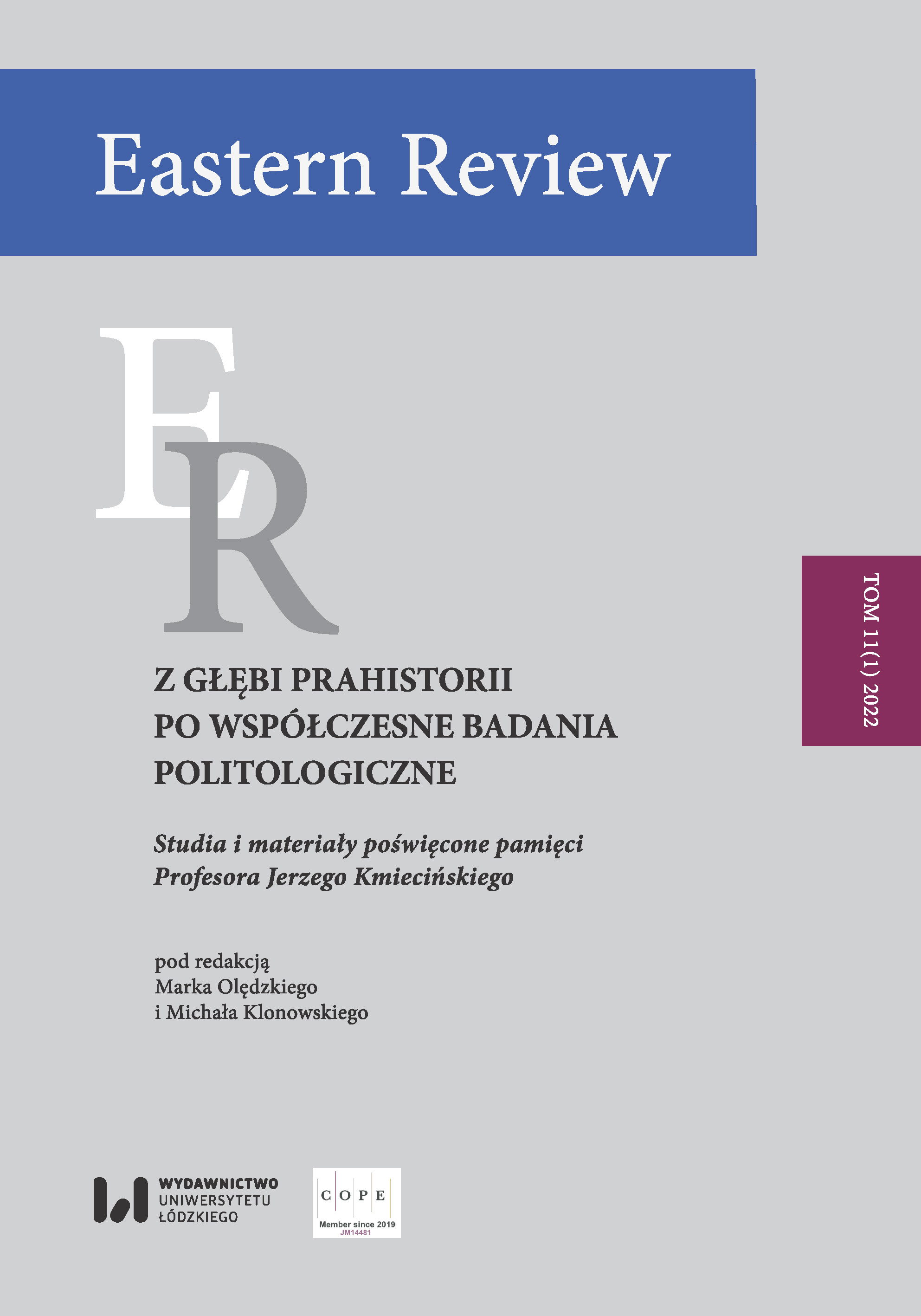O zapomnianym pałacu Sapiehów w Dubnie na Podlasiu
DOI:
https://doi.org/10.18778/1427-9657.11.04Słowa kluczowe:
Podlasie, Dubno, Sapiehowie, archeologia historyczna, badania zespołów rezydencjonalnychAbstrakt
Sapiehowie to jeden z najpotężniejszych rodów magnackich Wielkiego Księstwa Litewskiego, wywodzący się z ziem dzisiejszej Białorusi i Rosji. Jeden z nich Iwan Sapieha był pierwszym wojewodą podlaskim. W 1512 r. został właścicielem wsi Dubno, gdzie od przełomu XVI i XVII w. funkcjonował zespół dworski, który na przełomie XIX i XX w. został zrujnowany i zapomniany.
W latach 2006–2010 i 2013 przeprowadzono wykopaliskowe badania archeologiczne, m.in. dzięki dotacjom z Europejskiego Funduszu Rozwoju Regionalnego w ramach Programu Sąsiedztwa Polska-Białoruś-Ukraina INTERREG IIIA/TACIS CBC 2004-2006 oraz Ministerstwa Kultury i Dziedzictwa Narodowego. Prace archeologiczne uzupełniono badaniami nieinwazyjnymi, geomorfologicznymi, przyrodniczymi, fotografią lotniczą oraz stosownymi kwerendami źródłowymi.
Prace te przyniosły niezwykle interesujące rezultaty. Okazało się bowiem, że odkryto ukryte pod powierzchnią ziemi relikty tej rezydencji. W efekcie przeprowadzonych prac archeologiczno-architektonicznych można było zrekonstruować w znacznej mierze ten zespół rezydencjonalny składający się z pałacu, kaplicy, innych budynków pomocniczych, jak: karczma, oranżeria, lamus. Jednak najbardziej spektakularnym wynikiem było odkrycie pałacu, nazywanego Kamienicą Wielką. W trakcie badań rozpoznany został rzut kamienicy na poziomie parteru oraz zlokalizowany w piwniczce skarbczyk.
Opisana Kamienica Wielka jest typowym dla XVII w. zespołem budynków dworskich. Jednak jest jednym z pierwszych na Podlasiu obiektów, które zostały odkryte w miejscu, gdzie na powierzchni ziemi śladami dawnej świetności były tylko ułamki ceramiki naczyniowej i gruz ceglany. Tak więc badania archeologiczne przywróciły do świadomości społecznej i wprowadziły do „obiegu naukowego” zapomnianą rezydencję Sapiehów, jednego z najznakomitszych rodów Rzeczpospolitej Szlacheckiej.
Bibliografia
Andrzejewski, A., Pietrzak, J. 2002–2003. Jeszcze o archeologicznych badaniach dworu w Poddębicach. Łódzkie Sprawozdania Archeologiczne VIII, s. 345–360.
Google Scholar
Andrzejewski, A., Ginter, A., Pietrzak, J. 2006. Sprawozdanie z nadzorów i badań archeologiczno-architektonicznych prowadzonych w okresie od grudnia 2005 roku do października 2006 roku na terenie pałacu w Złoczewie, gm. Złoczew, pow. sieradzki, woj. Łódzkie. Łódź: maszynopis WUOZ w Sieradzu.
Google Scholar
Brykowska, M. 1999. Dwór obronny w Gojcieniszkach w świetle źródeł i analizy porównawczej. W: K. Kuśnierz, Z. Tołłoczko (red.). Studia z historii architektury i urbanistyki poświęcone profesorowi Józefowi Tomaszowi Frazikowi. Kraków: Wydawnictwo Politechniki Krakowskiej.
Google Scholar
Haur, J.K. 1679. Ziemiańska generalna Oekonomika. Kraków.
Google Scholar
Jakimowicz, T. 1979. Dwór murowany w Polsce w wieku XV. Warszawa–Poznań: Państwowe Wydawnictwo Naukowe.
Google Scholar
Kajzer, L. 2004. Zamki i dwory obronne w Polsce Centralnej. Warszawa: Wydawnictwo DiG.
Google Scholar
Karwowska, H., Andrzejewski, A. (red.). 2007. Rezydencja Sapiehów w Dubnie. Białystok: Wydawnictwo Muzeum Podlaskiego w Białymstoku.
Google Scholar
Karwowska, H., Andrzejewski, A. (red.). 2008. Rezydencja Sapiehów w Dubnie II. Białystok: Wydawnictwo Muzeum Podlaskiego w Białymstoku.
Google Scholar
Karwowska, H., Andrzejewski, A. (red.). 2013. Założenie rezydencjonalne Sapiehów w Dubnie. Białystok: Wydawnictwo Muzeum Podlaskiego w Białymstoku.
Google Scholar
Miłobędzki, A. 1980. Architektura Polska XVII wieku. Warszawa: Państwowe Wydawnictwo Naukowe.
Google Scholar
NEP. 1995. Nowa encyklopedia powszechna PWN. T. 3. Warszawa: Państwowe Wydawnictwo Naukowe.
Google Scholar
Piłaszewicz, Z. 1980. Boćki, woj. białostockie. Studium historyczno-urbanistyczne do planu zagospodarowania przestrzennego Bociek opracowane na zlecenie Urzędu Wojewódzkiego w Białymstoku – Wydziału Kultury i Sztuki WKZ, maszynopis w Archiwum Podlaskiego Wojewódzkiego Konserwatora Zabytków, Białystok.
Google Scholar
Romaniuk, Z. 2007a. Dubno – Zapomniana rezydencja Sapiehów. W: H. Karwowska, A. Andrzejewski (red.). Rezydencja Sapiehów w Dubnie. Białystok: Wydawnictwo Muzeum Podlaskiego w Białymstoku, s. 23–46.
Google Scholar
Romaniuk, Z. 2007b. Inwentarze dworu dubieńskiego z lat 1646–1662. W: H. Karwowska, A. Andrzejewski (red.) Rezydencja Sapiehów w Dubnie. Białystok: Wydawnictwo Muzeum Podlaskiego w Białymstoku, s. 99–115.
Google Scholar
Samsonowicz, H. 2013. Wstęp. W: H. Karwowska, A. Andrzejewski (red.). Założenie rezydencjonalne Sapiehów w Dubnie. Białystok: Wydawnictwo Muzeum Podlaskiego w Białymstoku, s. 7–17.
Google Scholar
Tyszkiewicz, J. 1974. Mazowsze północno-wschodnie we wczesnym średniowieczu. Historia pogranicza nad górną Narwią do połowy XIII wieku. Warszawa: Wydawnictwo Mazowiecki Ośrodek Badań Naukowych.
Google Scholar
Urwanowicz, J. 2006. Województwo podlaskie w okresie przedrozbiorowym. W: B. Pacholska (red.). Czas na Podlaskie. Tykocin. Referaty z sesji historycznej 492 rocznica urodzin województwa podlaskiego. Białystok: Wojewódzki Ośrodek Archeologiczno-Konserwatorski w Białymstoku.
Google Scholar
Wiśniewski, J. 1977. Osadnictwo wschodniej Białostocczyzny, geneza, rozwój oraz zróżnicowanie i przemiany etniczne. Acta Baltico-Slavica XI, s. 7–79.
Google Scholar
Opublikowane
Jak cytować
Numer
Dział
Licencja

Utwór dostępny jest na licencji Creative Commons Uznanie autorstwa – Użycie niekomercyjne – Bez utworów zależnych 4.0 Międzynarodowe.










